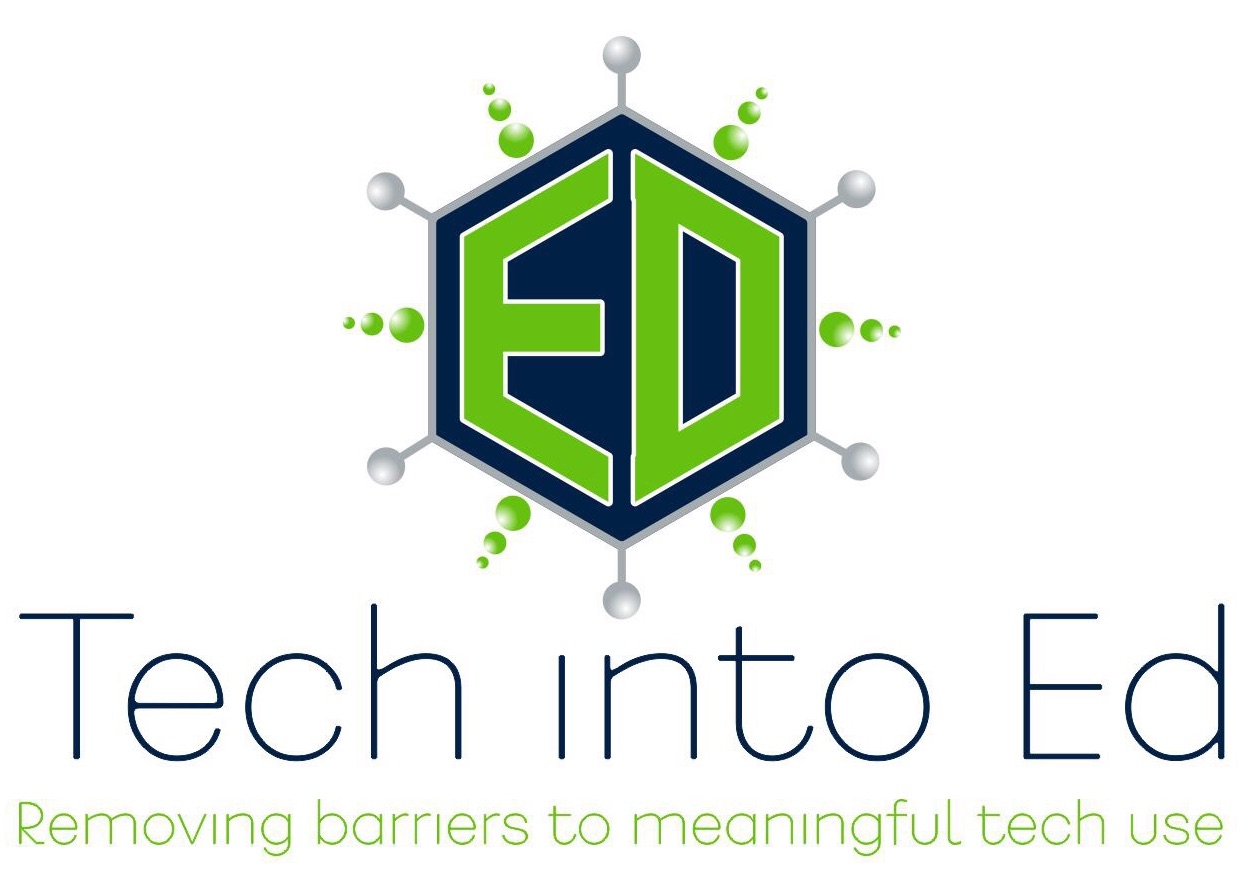
Removing barriers to MEANINGFUL technology use!
Risk Taking is the Way Forward: What is your #edurisk ?
#edurisk
Educators are being asked to take on a lot today when it comes to improving instructional practice and educational outcomes. Whether it be increasing student engagement, embracing new tools and concepts for instructing students (or having students create and demonstrate knowledge), re-thinking educational spaces, or a long list of other topics that impact our work with students, the reality is that it can feel overwhelming.
However, in synthesizing the larger message of these changes in practice, there is one clear theme that surfaces. Change is evident and inescapable. A hyper-connected world is a world that is dynamically changing. If an educator's primary responsibility is readying students for the life that they will one day face, we must prepare them to ready for a life of ongoing change.
While it's an understandable feeling to just want to throw up your hands in surrender to the overwhelming overflow of change (especially in education). For the good of our students we can't give up that easily. There is hope, and it comes neatly packaged in a simple idea - "risk taking."
Why is risk taking so important?
The act of willingly taking risks is the life line that makes dealing with change palatable, manageable, and survivable. Risk taking, by its very nature, provides a platform on which we can identify our challenges, develop a plan for tackling those challenges, and then safely implement our plan without feeling the pressure to be immediately successful.
In taking a risk, we agree to try something new without fear of failure -- risks, by their very definition, embody some chance at failure. The universal understanding of what a risk is (implying that failure may happen) provides us with a safety net to try something new.
It is the act of trying something new, though, that is the key element. When change happens, it often requires a different response than previously offered/attempted. The feeling of being overwhelmed by change is usually in direct response to our inability to attempt a new response; we are committed to the way we've always done things and struggle to see a different way to respond. When we take a risk, we commit to trying something new. We accept that it may or may not be a successful attempt, but we are willing to forego the way we once did things to attempt a new way of doing things. In doing so, we begin on our journey forward to both address and deal with change.
Taking a risk
Put simply, a risk is any change you elect to make (and actively engage in) that stretches you beyond your comfort zone. Risks are not determined by the overall magnitude of the change or the size of the impact it has. Personal changes that impact one person are valuable risks, just as are risks that change an entire organization impacting thousands of people. In the end, a risk's magnitude and sphere of influence is not the determining factor if it is a risk or not -- it is if the risk taken stretches the person, organization, or society beyond an existing level of comfort.
Steps in the Risk Taking Process
- The first step to taking a risk is acknowledging personal/organizational anxiety over a change that has happened which requires a different response.
- The second step is developing an actionable plan that provides an adequate response to that change.
- The third step is determining what success and failure might look like and accepting the consequences for both.
- Finally, the fourth step is taking action -- going for it by taking the risk.
Remember that every person has his/her own aversion to risk. Some individuals are comfortable with risks that may seem monumental to others. Others may feel that even slight changes are a big risk. However, both are valuable and noteworthy, as both are progressive steps forward to address and deal with the realities of change. Your personal aversion to risk is a personal matter that you must grapple with and understand as a part of the risk taking process.
Sharing your risk
Witnessing risk taking is both humbling and inspiring. Knowing that an individual has literally taken a chance, put a part of themselves out there -- this is exactly the kind of action that can encourage others to take their own risk. In a hyper-connected world we can easily share our risks with others in ways that were never before possible. The use of social media is one avenue for this.
Understandably, for many of us the risk we take might simply be putting ideas out there for others see. We encourage you to think about the act of publicly sharing your risk with others as a way of building a network with others -- a network that just might be able to offer support, insight, or perspective based upon their experiences.
We are encouraging more educators to take risks and to share them out with the world! Through the use of a common code that is easily searchable, also called a hashtag, regardless of what social media network you choose to share in your risk can be identified. For this campaign we are going to use the following hashtag:
#edurisk
Whether you use Google + or Twitter, we would love for you to share your #edurisk with our community, both to mark and celebrate your personal risks in addressing the challenges of constant change, and also to inspire others to take those first steps forward -- steps that mark the cultural shift our profession is making to embrace and respond to a world of constant change.
Setting a Good Example for Students Related to Internet Use
t is easy to forget the irritating little pains of the past. Most of us have LONG forgotten the dreadfully slow Internet access that was experienced district wide near the conclusion of the 2012-13 school year. Painstakingly slow connections that made viewing instructional videos nearly impossible, halted some of our virtual academy students school work in its tracks, and wasted precious instructional minutes. With our robust new Internet connection in the School District of Waukesha, we seem to have MORE THAN ENOUGH bandwidth to go around this year. Right?
This is just a reminder that your actions as a classroom teacher, as a supervising staff member, as a member of our professional community, matter. We model for kids. Kids watch us closely. Just as we teach them with our words, we teach them with our actions, as well as our inability to act when we should. With that said, the example below is just one example of a way in which we can all set a better example for students.
We all know that the college basketball event known as "March Madness" can be a lot of fun. This year's March Madness was even more special with Marquette and UW-Madison making it to the tournament. As seems to be the case every March, a dedicated few sports fans seem to find ways to keep tabs on the game in a wide variety of ways. While it is ultimately harmless fun (that can seem almost necessary by that point in the school year), what we often fail to see is the impact that Internet use has on those around us (across the entire school district).
The graph below demonstrates the bandwidth consumed in the School District of Waukesha during the time the first round of the 2013 NCAA Basketball Tournament was being played. The red arrows and vertical red lines on the graph indicate the beginning and end of the basketball game played on that day.
Points worthy of noting:
- The bandwidth consumed in the final moments of the game is more than 10x the TOTAL bandwidth AVAILABLE in the district during the last school year
- Though our bandwidth use in general is about 4x higher this year than last year (a sign that our educational use of the Internet is far greater than what was even available last year), during the game our bandwidth use jumped substantially, and then returned to normal levels following the conclusion of the game (indicating an excessive amount of viewership for some event that happened within that time period...see if you can determine what it might be)
- Almost all of the traffic reported came from two sources, both of which were broadcasting the NCAA tournament at that time.
- 2 - 3 times the normal Internet traffic consumed during this period was streamed to about 130 users across the district -- that is approximately only 1-2% of our total number of users across the district
- Despite our incredible 1 Gig connection (an incredibly robust infrastructure in any school district), we topped out our usage. This is same situation that took place near the mid to end of last year that caused the haltingly slow Internet speeds across the district.
While it is easy to track these stats on a day when we can predict additional bandwidth usage, such as during March Madness, the reality is that many of us have daily Internet use habits that chew away at the bandwidth intended for meaningful teaching and learning. Whether that is having Pandora or iHeartRadio streaming all day in the background, watching Netflix or YouTube, maintaining constantly open windows with Tumblr, Facebook, and other services, or using the network for a wide variety of other uses not focused on education, the reality is the same -- your actions on our network impact others directly.
As we gear up for Waukesha One, which will see a major influx of devices hitting our Internet connection, it becomes even more important for us to set a good example for students. Asking a student to turn off a gaming site or a streaming radio station is much easier when we avoid using similar services ourself. Instructing a student to turn off his/her sporting or gaming event of choice is a more clear cut conversation when we have resisted the temptation to turn on that March Madness game while at school. This conversation will become even more relevant as we see our regular use of the Internet grow significantly as we make a change to more digitally focused teaching and learning.
All Internet use contributes to our overall bandwidth consumption! Overusing our Internet resources for non-educational purposes ultimately slows down the access for all -- including for teaching and learning. Set a good example. Help your kids see why educationally relevant use of the Internet matters at school. Protect one of our most valuable resources!

